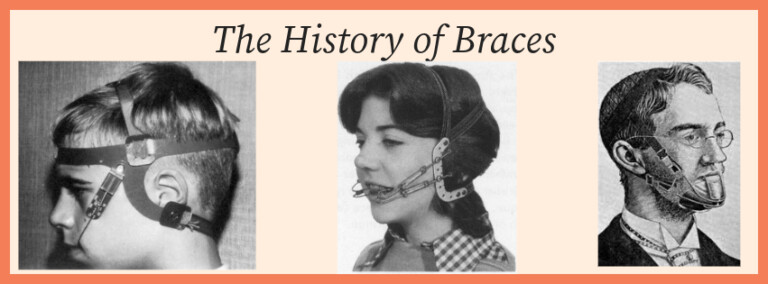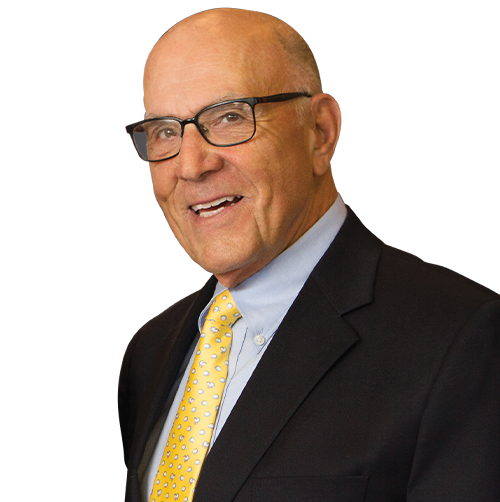Braces are a common sight today, transforming smiles and improving dental health. Pick up a middle school or high school yearbook and you will see the distinctive metal brackets peeking out from dozens and dozens of smiles. But how did we get here? How did this orthodontic treatment become commonplace?
Early Beginnings: Ancient Innovations
In medieval Europe, barber-surgeons performed a variety of tasks, from cutting hair to pulling teeth with crude instruments like the “pelican” and “tooth key.” These early dental practices were rough and often painful. By the 17th century, tooth extractions could involve using a steel punch elevator.
Dr. Wayne Sampson, a dental historian and professor at the University of Adelaide, explains that the roots of dental work go back much further than barber-surgeons. Archaeologists have found mummies with metal bands wrapped around their teeth, suggesting that the ancient Egyptians sought to correct dental issues. Similarly, archaeological evidence shows that the Etruscans, a pre-Roman civilization in Italy, used devices resembling modern braces to preserve the position of teeth in the mouth after death.
However, these early attempts were rudimentary and lacked the scientific understanding that would come later. They laid the groundwork for future advancements by demonstrating a long-standing human interest in dental aesthetics and function.
Despite this progress, dental techniques remained relatively crude until the early 20th century.
The Birth of Modern Orthodontics

Orthodontics began to take shape as a specialized field in the 18th century. Pierre Fauchard, known as the “Father of Modern Dentistry,” made significant contributions during this period. In his 1728 book, The Surgeon Dentist,
Fauchard described a device called the “Bandeau,” a horseshoe-shaped piece of iron that helped expand the arch of the mouth. This device can be seen as a precursor to modern braces.
The 19th century saw further advancements. French dentist Christophe-François Delabarre introduced the wire crib in 1819, which marked the beginning of the use of modern wire appliances in orthodontics.
Meanwhile, J.S. Gunnell invented the occipital anchorage, a device that applied force from the outside of the mouth to move teeth, foreshadowing the development of headgear.
The Advent of Braces

At the start of the 20th century, dental technology began to evolve more rapidly along with the evolving chemical science fields. Chemist Leo Baekland developed the first synthetic plastic, which he called Bakelite, that promptly found its way into dental use due to it’s heat-resistant, insulating properties.
Additionally, the term “braces” started being used in the early 20th century. Edward Angle, an American dentist, is often referred to as the “Father of Modern Orthodontics.” Angle developed the first classification system for malocclusions (misalignments of the teeth and jaws) in the late 19th century. His system is still in use today, underscoring its lasting impact.
Angle also designed the “edgewise appliance,” which became the basis for modern braces. His work emphasized the importance of aligning teeth not just for aesthetic purposes but also for improving overall oral health. By the early 1900s, braces had evolved to include metal bands wrapped around each tooth, connected by wires.

Mid-20th Century: Technological Advancements
The mid-20th century was a period of significant technological advancements in orthodontics. One of the most notable figures during this time was Dr. Harold D. Kesling.
In 1945, he introduced the “positioner,” a removable appliance that could make minor adjustments to the position of teeth. This innovation laid the groundwork for the development of clear aligners, which would become popular decades later.
During the 1970s, orthodontics experienced another breakthrough with the introduction of dental adhesives. Prior to this, metal bands had to be wrapped around each tooth, a process that was both time-consuming and uncomfortable for patients.
The advent of dental adhesives allowed orthodontists to bond brackets directly onto the surface of the teeth, simplifying the process and making braces less bulky.
The Begg Technique: An Orthodontic Revolution
Dr. Percy Raymond Begg, better known as Tick Begg, played a pivotal role in modernizing orthodontics. After studying under the renowned orthodontist Dr. Edward Hartley Angle in the United States, Begg began practicing in Adelaide in 1926.
Initially, he adhered to Angle’s methods, but by 1928, Begg innovated by extracting selected teeth to address dental crowding. This approach, known as the Begg technique, used new bracket styles, stainless steel wire, and light forces to correct teeth more gently and efficiently.

Begg’s techniques revolutionized orthodontics globally, turning Adelaide into a hub for orthodontic education and innovation. His method of extracting teeth to make room for others, rather than simply moving them, marked a significant shift in orthodontic practice.
This innovation attracted dental professionals from around the world to Adelaide to learn from Begg. The museum in Adelaide dedicated to Dr. Begg honors his contributions and showcases the evolution of orthodontic tools and techniques.
The Rise of Aesthetic Orthodontics
As technology advanced, so did patient expectations. The late 20th century saw a growing demand for less visible orthodontic treatments. This led to the development of ceramic braces in the 1980s, which used tooth-colored or clear materials to make the braces less noticeable. Around the same time, lingual braces, which are attached to the back of the teeth, were introduced as another discreet option.

The most significant advancement in aesthetic orthodontics came in the late 1990s with the introduction of clear aligners. Align Technology, founded in 1997, launched Invisalign in 1999. Invisalign uses a series of clear, removable aligners to gradually move teeth into their desired positions. This innovation provided a less obtrusive, more aesthetic alternative to traditional braces. The popularity of these clear aligners revolutionized the field.
Modern Orthodontics: Embracing Technology
Today, orthodontics is a blend of art and science, with technology playing a crucial role. Digital imaging and computer-aided design have transformed the way orthodontists diagnose and plan treatments. Three-dimensional (3D) imaging allows for precise mapping of the teeth and jaw, leading to more accurate and effective treatment plans.
Moreover, 3D printing has made it possible to create custom orthodontic appliances with a high degree of precision. Patients can now benefit from appliances that are tailor-made to fit their unique dental structures, improving comfort and effectiveness.

From the History of Braces into the Future
The future of orthodontics looks promising, with continuous advancements on the horizon. Researchers are exploring the use of biotechnology to develop self-ligating braces that reduce friction and speed up treatment times. Additionally, nanotechnology holds potential for creating materials that can deliver therapeutic agents to teeth and gums, promoting healing and reducing discomfort.
Artificial intelligence (AI) is also making its way into orthodontics. AI algorithms can analyze vast amounts of data to predict treatment outcomes more accurately and customize treatments for individual patients. This personalized approach ensures that each patient receives the most effective and efficient care possible.
Conclusion
The journey of braces from ancient times to the modern era is a testament to human ingenuity and the relentless pursuit of better dental health. From the crude metal bands of ancient Egypt to the high-tech clear aligners of today, each innovation has built upon the last, leading to the sophisticated orthodontic treatments we now have.
For dental professionals, understanding the history of braces is not just about appreciating past achievements. It’s also about recognizing the potential for future innovations. As technology continues to evolve, so too will the tools and techniques at our disposal, allowing us to provide even better care for our patients.
Orthodontics will only continue to evolve faster, leading to more comfortable and more accessible treatment than ever before.




